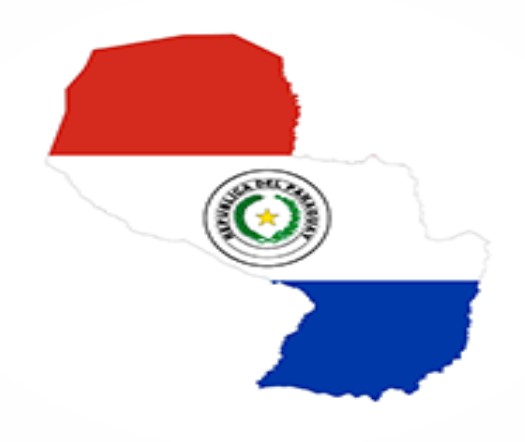
Paraguay is a landlocked country in South America, bordered by Argentina, Brazil and Bolivia.
There is a population of about 6.1 million with around 2.3 million living in the capital and largest city of Asunción and surrounds.
The Spanish originally colonised Paraguay in the early 1500s and in the early 19th century got its independence from Spain. It went through some odd governments, internal wars and some dictators until 1989 when it installed a democratic system of government.
Paraguay is home to the world’s largest water reserve. The Guarani Aquifer, is located underneath Paraguay, Uruguay, Brazil and Argentina. It stretches 1.2 million square kilometres and holds 40,000 cubic kilometres of fresh water. It could supply fresh drinking water to the world for around 200 years.
In addition, Paraguay has the world’s second largest hydro-electric powerplant. Shared with Brazil, the Itaipu Dam is built on the River Parana. It generates nearly all of Paraguay’s electricity as well as Brazil using approximately 90% of the energy generated too.
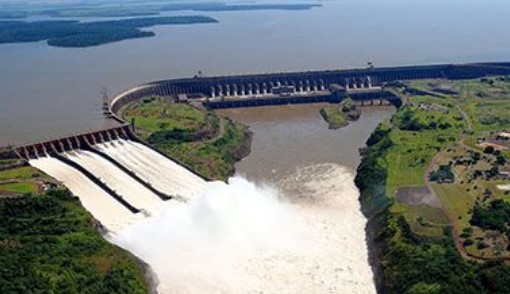
Bizarrely, Paraguay has the world’s largest Navy of any landlocked country in the world. It may not have a coastline, but it has naval aviation, a coastguard and a river defence corps too. The Paraguayan navy operates on the country’s rivers and can access the ocean through Argentina.
Paraguay is first and foremost a tax haven. According to our hostel owner, it is corrupt, but not as corrupt as all of the countries around it. Paraguay offers global citizens, remote entrepreneurs and digital nomads offshore fiscal residency. Other nations that offer this require you to spend at least 3 or 6 months per year in the country but in Paraguay you only need to visit once every three years (after the original setup). All offshore earnings are tax free and local earnings are taxed at favourable rates.
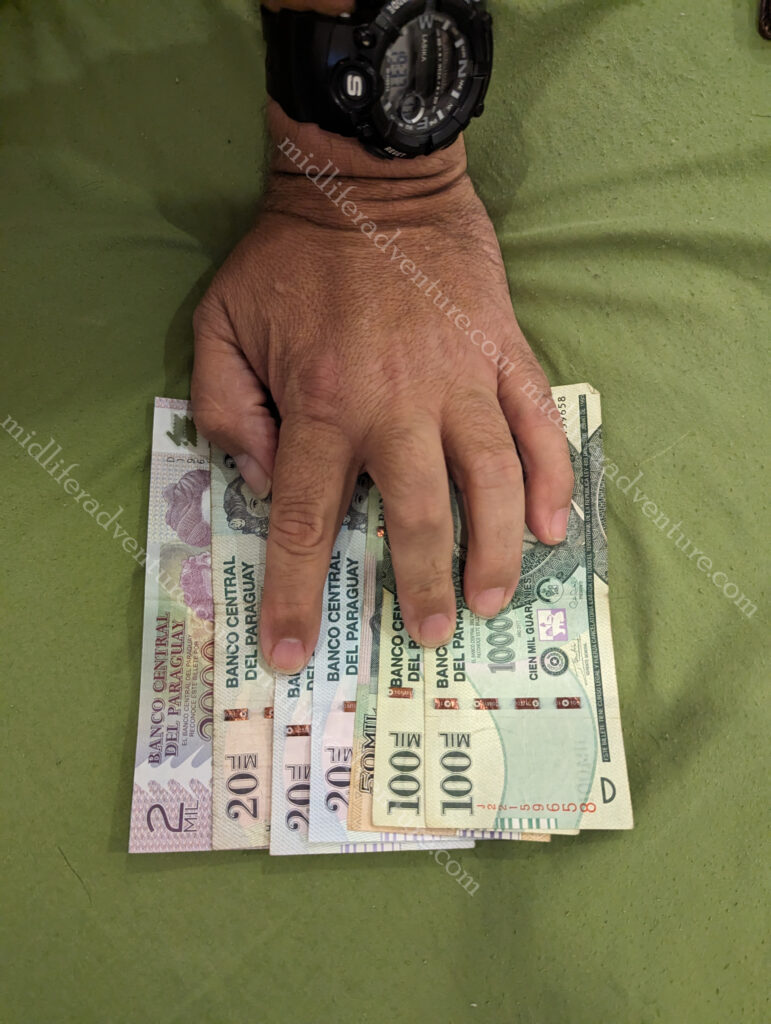
Money
After walking around Argentine with hundreds of essentially $1 bills, the situation in Paraguay was very different. The first thing that Jill handed me was a 100 million Guarani note (about $20).
So if you want to be an instant billionaire, change around $200 bucks worth of local currency and you are all set.
Asuncion
Asunción is one of the oldest cities in South America and the longest continually inhabited area and is known as “the Mother of Cities”. From Asunción, Spanish colonials launched expeditions to find other cities. According to the 2022 Census, just under half a million liver here and up to 2.3 million live in the greater metro area.

Doing our early research there were about two interesting (ish) things to see in town and due to the timing of cheap flights, we would be here for around 4 days. So we had plenty of time to poke around and get a feel for the place rather than just dart about. This was a good thing too as the temperatures for our visit started at around the 37-degree mark and climbed from here, so hiding in the air conditioning in the afternoon was in order.
The city has some stunning old architecture, but like Valparaiso it has all pretty much been left to rot away. There is a little bit of street art (but not very much. But that which there is, is related to the native tribes that existed before Spanish Colonisation. There were five linguistic groups (Guarani, Maskoy, Mataco Mataguayo, Zamuco and Guaicurú) covering 19 Indigenous tribes.





Our walkabout took us through one of the few parks in town, there were others but they were fenced off and locked off from the public. We found the old and derelict railway station that ran with steam trains through to its demise in 1999.








Panteon Nacional de los Heroes is the mausoleum of the country, where the remains of various significant figures lay. The remains include the first president, the heroes of the Chaco War against Bolivia, the children martyrs of Acosta Ñu (an 18th century battle) and two Unknown Soldiers.



The Asuncion Cathedral is dedicated to the House of the Virgin of the Assumption and is the seat of the catholic church in the city.






Casa de la Independencia is basically just a small but important house. In this house the emancipation of the country (from Spanish rule) was planned.
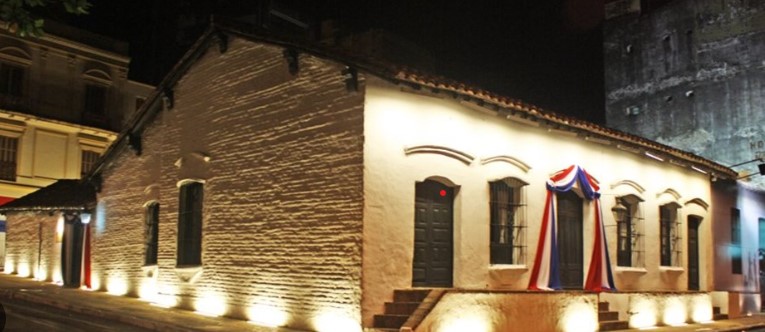
A group of Paraguayans (known as the heroes of independence) emerged from this house on the evening of 14 May 1811, to declare the independence of Paraguay. It is one of the few colonial houses that remain in Asuncion and gives a view of what Paraguay was like 200 years ago.
Palacio de López is a palace that serves as workplace for the President of Paraguay and is also the seat of the government of Paraguay. Our visit saw about 20 riot police just milling about in the park with full riot gear. Nobody was fully geared up but riot shields, helmets and shotguns were all about. But as it was a 42 degree day, nobody had enough energy to protest anything much.





Paraguay has a history of protests, with major protests being held in 1986, 1999, 2012, 2017 and again in 2021.
Jill did manage to spot one restaurant on our wander around town.
But for some reason the idea of eating at the Rusty Colon did not appeal.
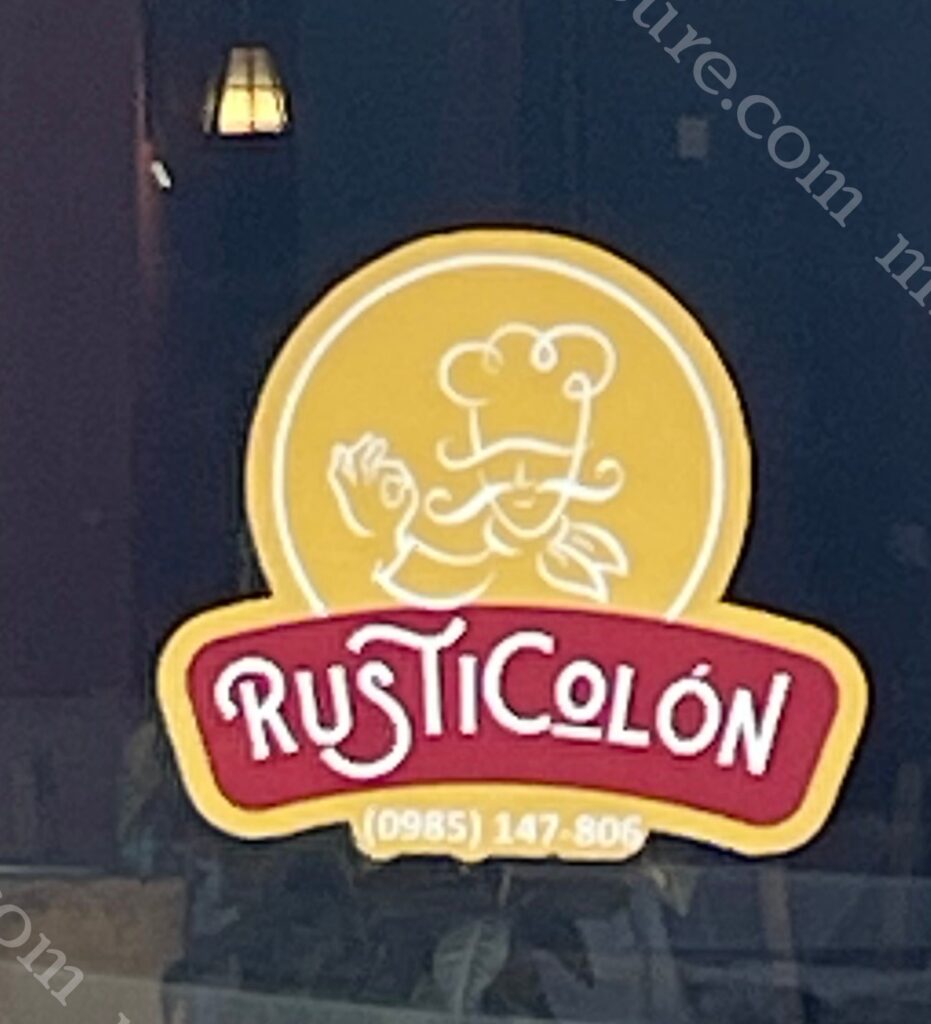
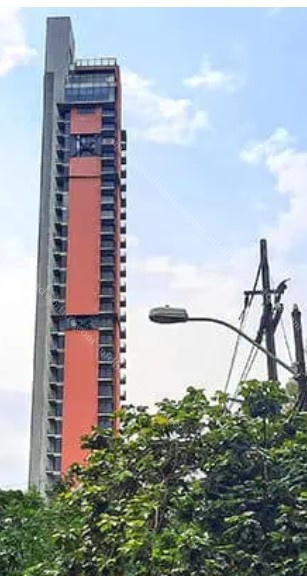
The Icono Tower is the tallest building in town (at 37 storeys).
It is a bizarre spindly-looking thing sitting all out on its own. Apparently it is one of the most dominant skyscrapers in South America.
But really it looks like someone randomly jammed a red needle into the ground and forgot about it.
La Costanera de Asuncion is basically just a boardwalk/ promenade type area along the river.
But there is very little on the river.
It is a nice walk (apart from the 42-degree day that we picked) but there really is nothing to see.
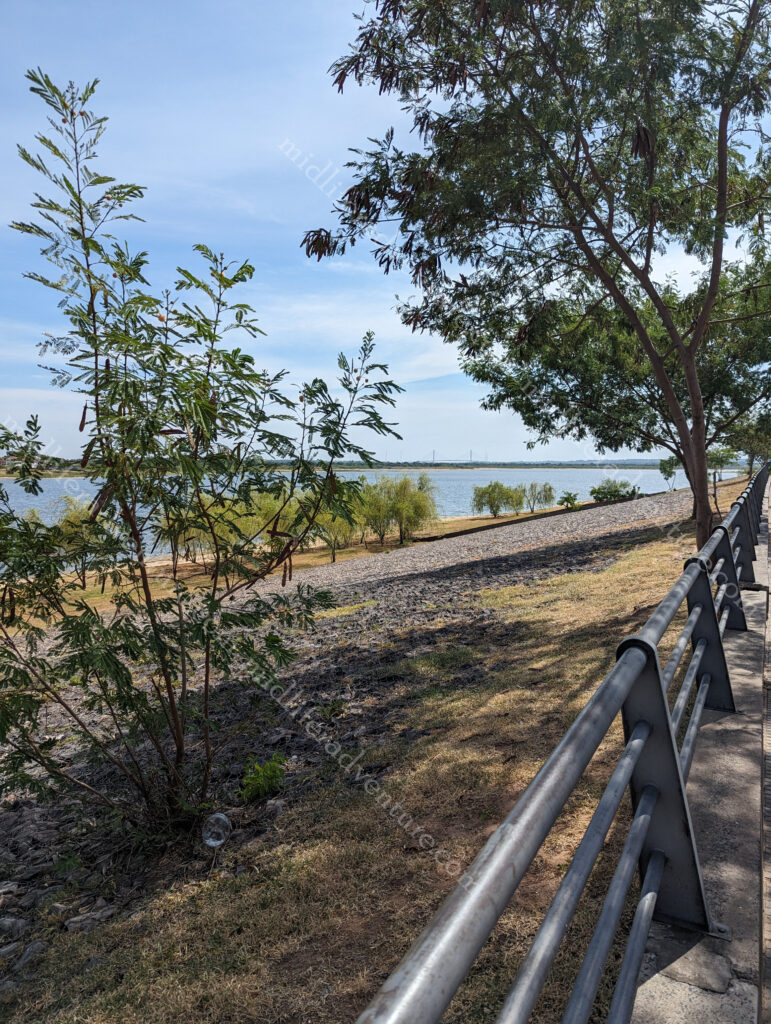
We really did try very hard to find things to see and do in Asuncion, but there was very little on offer. The lack of tax revenues comes with a lack of infrastructure investment. There are no functioning footpaths, tourist sights or any sort of formal infrastructure. The parks were run down or closed up, the one good thing was that the internet worked well. Restaurants and cafe’s were quite cheap and the food was ok (if a little carbohydrate and cheese heavy).
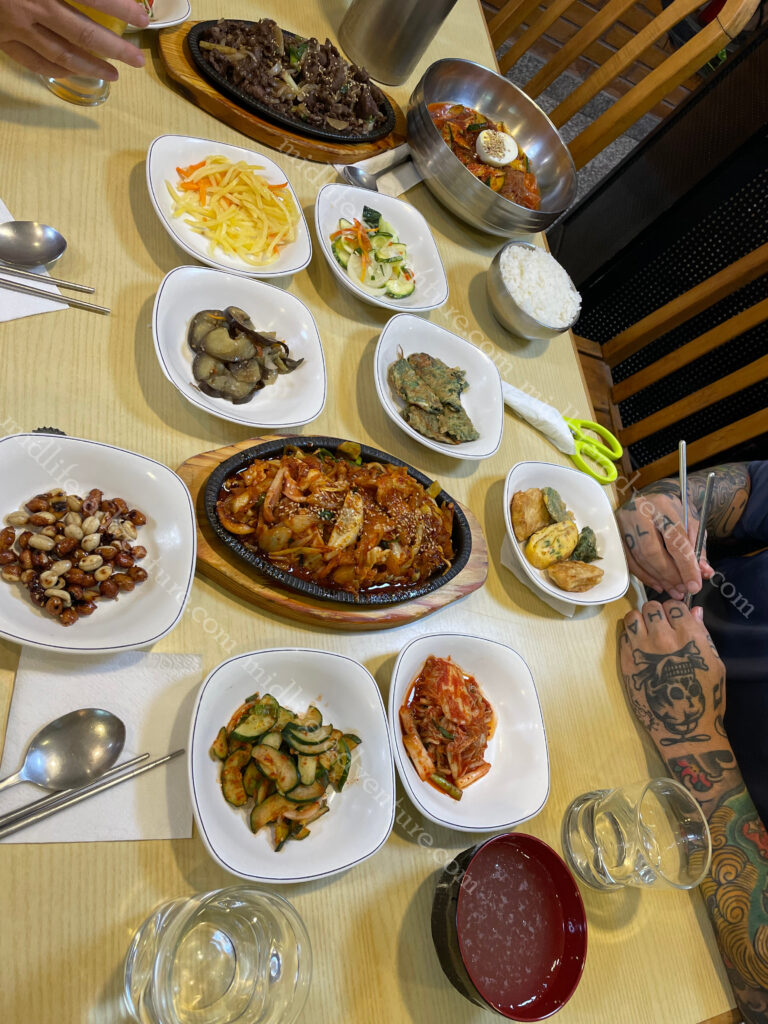
We got taken out by the hostel owner for his favourite meal (Korean if you can believe it) and it was good.
A huge lunch for 3 of us, with a beer and a wide variety of dishes kicked in at about $40.
All of our other meals came in cheaper than this and were pretty good.
If you are looking to get off the beaten path (as if heading to Paraguay was not already this) then about 400km away you can find the Ruins of Jesús de Tavarangue. These are the ruins of a Jesuit mission that was designed to bring the local Indian tribes (the Guarani people) into settlements. These sorts of missions were established by the Jesuit Order of the Catholic Church early in the 17th century. This one was not finished as the Jesuit order was expelled from Paraguay in 1767.





Paraguay was interesting enough, but this is probably going to land in the been there, done that box.